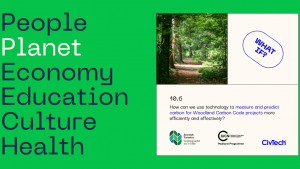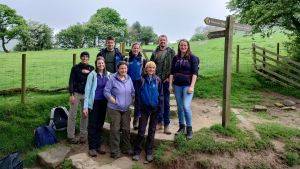Yorkshire Dales land managers and environmental organisations work collaboratively to combat climate change and flooding
Environmental organisations met with land managers, farmers and local MPs Julian Sturdy (York Outer) and Rishi Sunak (Richmond) in Leyburn, Yorkshire Dales last week to discuss the role of collaborative land management in providing public goods.
With Secretary of State for the Environment, Michael Gove, recently setting out plans to divert current agricultural payments so that public money pays for public goods, the meeting was timely in its demonstration of action already taking place in this corner of the Yorkshire Dales.
The ‘public goods’ up for discussion at this particular meeting were land management interventions to help combat climate change and flooding. The UK was described as having its very own ‘rainforest’ for storing carbon in the form of its blanket bogs – with Pennine PeatLIFE demonstrating peatland restoration techniques at Howesyke Farm to help alleviate climate change. Private investment to support this type of work was promoted by the IUCN UK Peatland Programme who introduced the Peatland Code. This voluntary scheme provides a mechanism for businesses to ‘buy’ the carbon emissions saved through peatland restoration and management – a concept that was encouraged by Julian Sturdy MP, who supported efforts to see “business offset their carbon in the UK rather than looking abroad.”
Flood prevention as a public good was introduced by the Yorkshire Dales National Park Authority and the Yorkshire Dales Rivers Trust, who have been working collaboratively with Howesyke Farm and other land managers in the area to address this issue. A practical guide has been created providing clear advice on natural flood management measures that can be taken and these were demonstrated at Howesyke Farm – including tree planting and the creation of buffer strips.
Rob Brown of Howesyke Farm, which was used to showcase both peatland and natural flood management said:
“We have access to a great deal of experience and knowledge from within our local environmental organisations. I have been impressed at what we’ve been able to achieve together over a relatively short-time – although the real impact of the land management interventions we’ve made will really show in the next few decades. This has all been possible whilst maintaining more traditional land uses, including sheep farming and a grouse shoot.”
Julian Sturdy MP added:
“A successful and viable rural sector is necessary to support the delivery of environmental benefits in the future.”
The need for science and research to back up land management decisions, so that the right interventions are made at the right time was also highlighted – with Yorkshire iCASP from the University of Leeds presenting how they are working to ensure that existing research can be used to inform flood management decisions. Rishi Sunak MP provided reassurance of Government’s commitment to driving forward this work, stating:
“Opportunities will continue to exist through funders such as the European Research Council, and the Government intend to increase spending on vital research year-on-year.”
Overall, the meeting provided an excellent opportunity to share learning and ask questions of the organisations involved, as well as of local MPs, with one farmer from the Wensleydale Facilitation Fund claiming events like these provided “a good way of meeting like-minded people sharing a common interest.”










